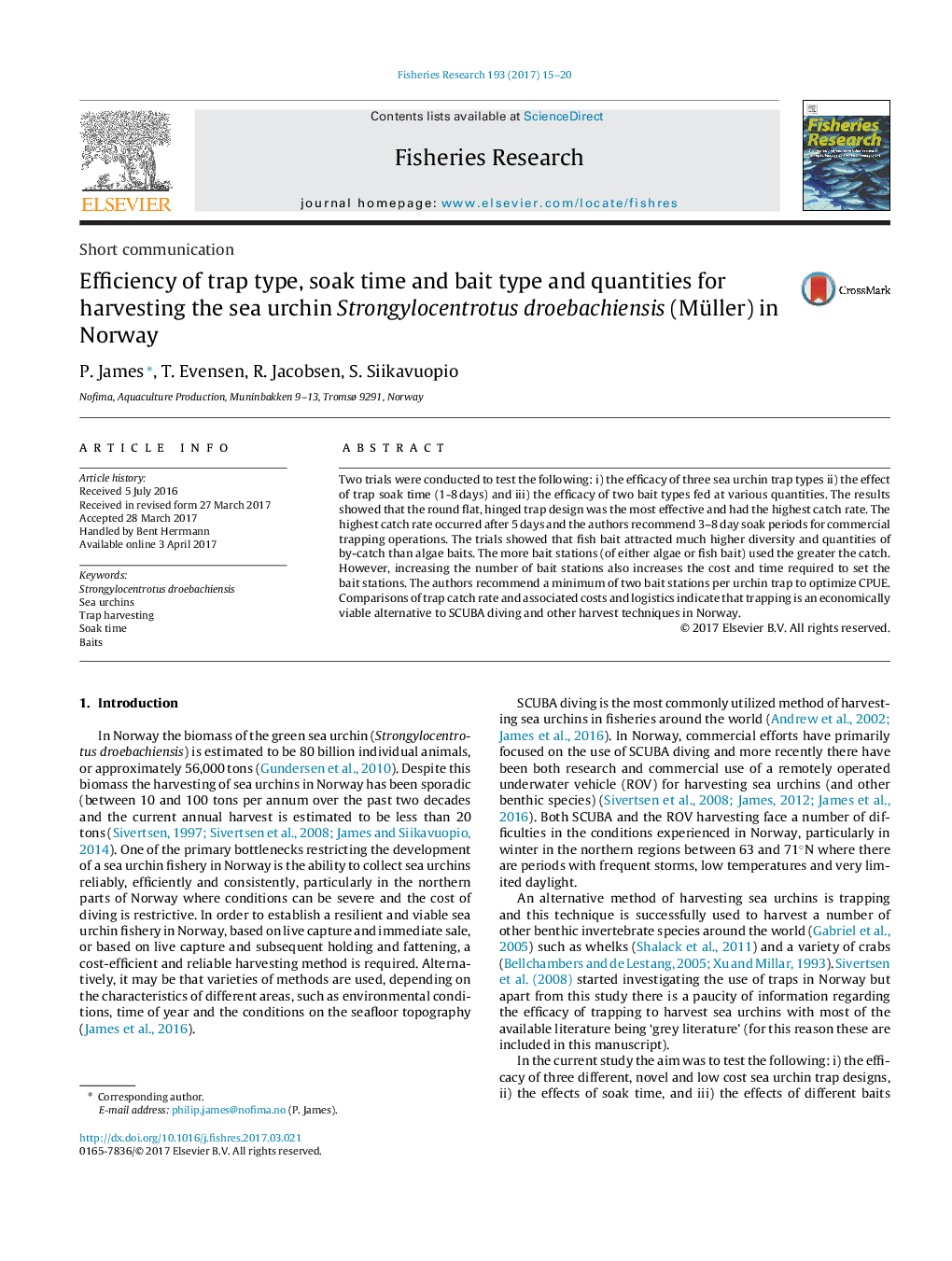| Article ID | Journal | Published Year | Pages | File Type |
|---|---|---|---|---|
| 5765471 | Fisheries Research | 2017 | 6 Pages |
â¢We tested the efficacy of three sea urchin trap types, various soak periods and two bait types and quantities.â¢The round collapsible trap design was the most effective and had the highest catch rate.â¢The optimal period for setting the traps was 3-8 days.â¢Fish bait attracted a much larger diversity and quantities of by-catch than the algae baits.â¢Trapping is an economically viable alternative to SCUBA diving and other harvesting techniques in Norway.
Two trials were conducted to test the following: i) the efficacy of three sea urchin trap types ii) the effect of trap soak time (1-8Â days) and iii) the efficacy of two bait types fed at various quantities. The results showed that the round flat, hinged trap design was the most effective and had the highest catch rate. The highest catch rate occurred after 5Â days and the authors recommend 3-8Â day soak periods for commercial trapping operations. The trials showed that fish bait attracted much higher diversity and quantities of by-catch than algae baits. The more bait stations (of either algae or fish bait) used the greater the catch. However, increasing the number of bait stations also increases the cost and time required to set the bait stations. The authors recommend a minimum of two bait stations per urchin trap to optimize CPUE. Comparisons of trap catch rate and associated costs and logistics indicate that trapping is an economically viable alternative to SCUBA diving and other harvest techniques in Norway.
